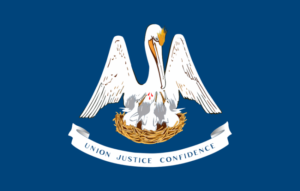Security and Pledge – Perfection of a security interest
R.S. 10:9-102(39)(39) “Financing statement” means a record or records composed of an initial financing statement and any filed record relating to the initial financing statement.
R.S. 10:9-502. Contents of financing statement; time of filing financing statement:
(a) Sufficiency of financing statement. Subject to Subsection (b), a financing statement is sufficient only if it:
(1) provides the name of the debtor;
(2) provides the name of the secured party or a representative of the secured party; and
3) indicates the collateral covered by the financing statement.
(b) Real-property-related financing statements, To be sufficient, a financing statement that covers as-extracted collateral or standing timber that constitutes goods, or that is filed as a fixture filing and covers goods that are to become fixtures, must satisfy Subsection (a) and also:
(1) indicate that it covers this type of collateral;
(2) [Reserved.]
(3) provide a description of the real property to which the collateral is related sufficient to cause the mortgage to be effective against third persons if the description were contained in a mortgage of real property filed for registry; and
(4) if the debtor does not have an interest of record in the real property, provide the name of a record owner.
(c) [Reserved.]
(d) Filing before security agreement or attachment. A financing statement may be filed before a security agreement is made or a security interest otherwise attaches.
R.S. 10:9-504. Indication of collateral. A financing statement sufficiently indicates the collateral that it covers if the financing statement provides:
(1) a description of the collateral pursuant to R.S. 10:9-108;
(2) an indication that the financing statement covers all assets or all personal property; or
(3) the year of manufacture, make, model, body style, and manufacturer’s serial or other identification number, in the case of a titled motor vehicle not held as inventory for sale or lease.
(4) the hull identification number, vessel length, model year or year built, name of manufacturer or model, vessel type, propulsion type, and principal material of hull construction in the case of a titled vessel not held as inventory for sale or lease.
(5) Serial number, year manufactured, name of manufacturer or model, in the case of a titled outboard motor not held as inventory for sale or lease.
§9-108. Sufficiency of description
(a) Sufficiency of description. Except as otherwise provided in Subsections (c), (d), and (e), a description of personal property is sufficient, whether or not it is specific, if it reasonably identifies what is described.
(b) Examples of reasonable identification. Except as otherwise provided in Subsection (d), a description of collateral reasonably identifies the collateral if it identifies the collateral by:
(1) specific listing;
(2) category
(3) except as otherwise provided in Subsection (e), a type of collateral defined in this Title;
(4) quantity;
(5) computational or allocational formula or procedure; or
(6) except as otherwise provided in Subsection (c), any other method, if the identity of the collateral is objectively determinable.(c) Supergeneric description not sufficient. A description of collateral as “all the debtor’s assets” or “all the debtor’s personal property” or using words of similar import does not reasonably identify the collateral.
(d) Investment property. Except as otherwise provided in Subsection (e), a description of a security entitlement, securities account, or commodity account is sufficient if it describes:
(1) the collateral by those terms or as investment property; or
(2) the underlying financial asset or commodity contract.
(e) When description by type insufficient. A description only by type of collateral defined in this Title is an insufficient description of:
(1) a tort claim other than as a form of proceeds under RS. 10:9-315;
(2) in a consumer transaction, consumer goods, a security entitlement, a securities account, or a commodity account;
(3) a life insurance policy;
(4) a judgment, other than as a form of proceeds under R.S. 10:9-315;
(5) a beneficial interest in a trust;
(6) an interest in an estate; or
(7) a collateral mortgage note.
